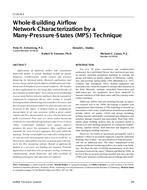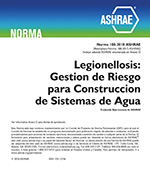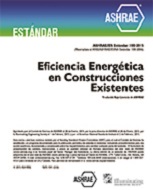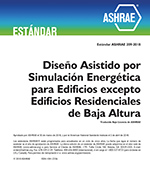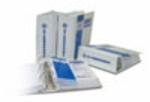Description
Applications of multizone airflow and contaminant dispersion models to specific buildings include air quality diagnosis, weatherization, smoke control, and pressure balancing for lab-hood safety. Research applications may involve energy and air quality impacts of infiltration and ventilation and development of associated standards. The benefits of these applications are not being fully realized because of uncertainties in model inputs. An economical test method that is as accurate but less intrusive and faster than incremental or component-by-component blower door testing is needed. Existing methods of measuring interzonal flows by tracers and flow-pressure network parameters by pressurization tests are reviewed in this paper. A method based on simultaneous measurement of all zone pressures within a given control volume and flow measurements on a few selected interzonal paths is presented. Flow rates at a subset of flow measuring locations are controlled during testing to take on two or more values. Constrained, nonlinear least squares analysis produces the power law parameters (flow coefficient and exponent) for each two-port aggregate flow path within the topology. Testing cost and effort are reduced by relying mainly on zone pressure measurements and a rich set of HVAC- or blower door-induced flow-pressure excitation states with relatively few flow measuring stations. Results of applying the method to a two-story test building are reported. Potential application to fault detection, acceptance testing, continuous commissioning, smoke dispersion, and other problems of building performance and operation are outlined.
Units: SI
Citation: Symposium, ASHRAE Transactions, vol. 107, pt. 2
Product Details
- Published:
- 2001
- Number of Pages:
- 13
- File Size:
- 1 file , 360 KB
- Product Code(s):
- D-7070
